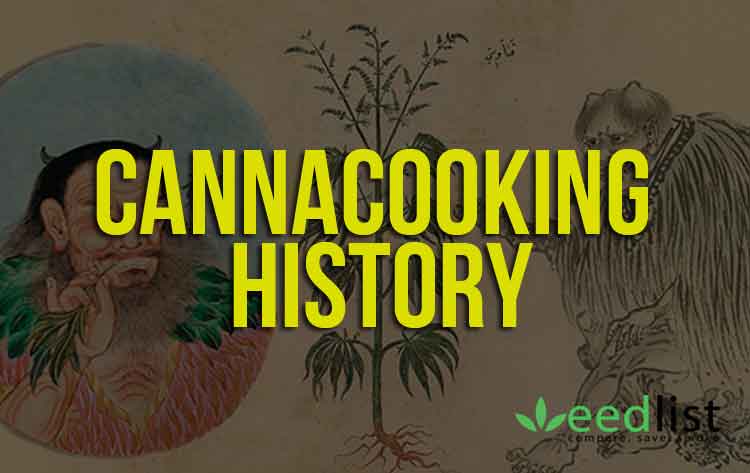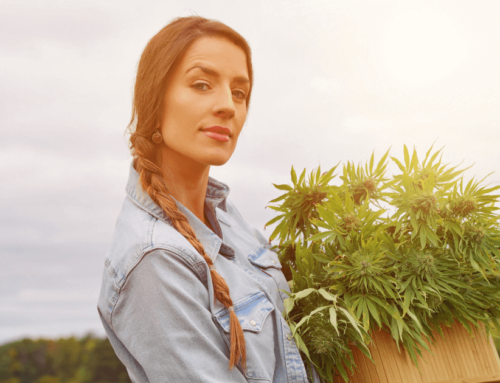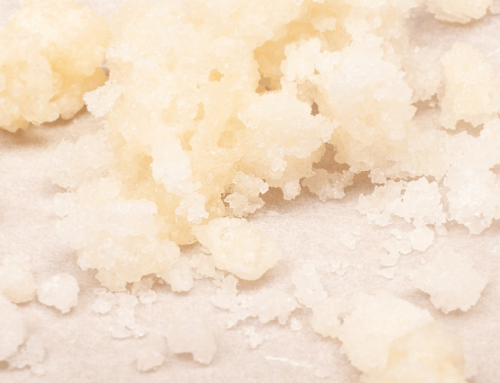It’s quite surprising to know that the use of marijuana has quite a long and illustrious history when it comes to cannabis edibles. Many anti-marijuana “activists” might have you believe that cannabis-use — especially when it comes to things like “pot brownies” and “weed cookies” — is a vice limited to hippies, deadbeats or liberal-arts college kids; yet some of the world’s oldest — and some would argue most successful — cultures have a rich history filled with smoking and cooking cannabis for both medicinal and recreational use. Cannacooking is certainly nothing new.
Cannabis circa China, 4500 BCE
Most historians will agree that the first evidence of wide-spread use of cannabis comes from China — about 6,500 years ago in fact. The Yang-Shao (the oldest known Neolithic culture in China) harvested cannabis seeds to be used as grains. The seeds were ground into meal, roasted whole, or cooked into porridge. The ancient tombs of China contained vessels filled with sacrificial hemp seeds to be used in the afterlife. While the Chinese did not incorporate cannabis directly in ancient spiritual rituals, the effects of the plants resinous leaves and flowers definitely did not go unnoticed. The world’s oldest known pharmacopoeia, the “Pên-ts’ao Ching”, states that the flowering tops of hemp plants, if taken “in excess” or over a long term, will make one “communicate with spirits and lightens one’s body.” Sounds fun!
The document then goes on to describe marijuana preparations for ailments such as malaria, constipation, rheumatic pains, absent-mindedness and “female-disorders”. As new agricultural technologies developed, the ancient Chinese learned to mill, heat, and wedge press cannabis seeds, effectively extracting the valuable hemp-seed oil — a technique still used in the western world in the twenty-first century. These pressed cannabis seeds yielded an astounding ~20% oil by weight! Talk about a blast from the past!
Cannabis oil was found to have a number of uses (though this site is most concerned with its use in cooking). After oil extraction, the residue (“hemp cake”) still contained nutritious oils and proteins, which became a healthy feed for domesticated animals… and more than the occasional poor person. Thus, the ancient Chinese likely became the first to discover, harvest, and cook with cannabis.
The Cannabis Culture of Ancient India
About 2,500 years later, the wandering Aryans (a nomadic Indo-Persian tribe) brought cannabis to India where it was quickly embraced for both its practical applications (e.g. hemp-fiber and nutrition) and its assistance in religious rituals (i.e. its psychoactive effect). Indians worshiped the spirits of plants and animals and marijuana immediately began to play a very active role in their rituals — and as a plant it eventually became an object of worship itself!
Marijuana became sacred and its spirit (the “bhangas spirit”) was worshiped “for freedom of distress and as a reliever of anxiety”. The ancient Indians saw this miraculous plant as a gift from the gods, wisely identifying it as a herb that lowered fevers, fostered sleep, relieved dysentery, stimulated appetite, prolonged life, quickened the mind, and improved judgment. We’re sure “be happier” was probably in that list, too.
Ghee Butter and Bhang
Like the Chinese, the ancient Indians used the seeds as grain for cooking. Unlike the the Chinese, however, the Indians also thought to harness the unique pharmacological effects of marijuana by cooking the flowers, leaves, and stems — instead of the just seeds — into ghee butter to be used in a myriad of recipes.
Ghee, a common ingredient in modern Indian food, is a delicious clarified butter that can be stored for super long periods of time without refrigeration (provided that it is stored in an airtight container). Cannabis-infused ghee can be substituted whenever regular ghee is called for provided the recipe ensures it will not be cooked at temperatures over 401 degrees Fahrenheit (at which point THC begins to break down and lose its potency).
In addition to cannabis ghee, ancient Indians also blended marijuana with other spices (e.g. poppy seed, pepper, ginger, caraway seeds, cloves, cardamon, cinnamon, nutmeg, sugar and milk) in a drink called “Bhang.” To this day, Bhang is commonly enjoyed in India in a similar way that alcohol is consumed in the west.
Cannabis Moves Across Ye Olde Europe
Eventually marijuana moved through the Middle East to countries like Babylonia, Palestine, and Egypt, where hemp was used in fabrics and as grains. It moved to Greece and may have been referenced in Homer’s great epic, The Odyssey. The Greeks and Romans made no notice of the plant’s intoxicant properties, but used cannabis hemp in fibers to make clothing and rugs.
Cooking With Cannabis in the United States
With increased trade and travel, cannabis seed was finally brought into all parts of the known world. When the first settlers came to the Americas, they brought cannabis with them. As far as the history of cooking with cannabis in Canada and the United States goes, the record is rocky, but certainly had its renaissance in the 60′s and 70′s with the strong Indian influence on the “hippie” generation.
Today, cooking with cannabis has come back into vogue; especially with the decriminalization of marijuana in 15+ states and the ever-present medicinal marijuana prescriptions permeating suburbia. Cooking with cannabis is a great way to experience both the nutritional and physiological effects of the plant. Cooking is a great hobby and a great relaxer, there’s a reason people have been cooking with cannabis for thousands and thousands of years.





Leave A Comment